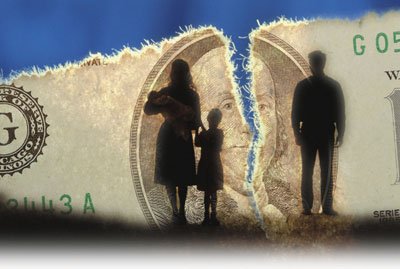Next to her pens and business cards, Linda Leitz keeps a box of
Kleenex handy on her desk, where her clients can reach it.
Bill Reed – The Gazette
ed****@****ic.com
Next to her pens and business cards, Linda Leitz keeps a box of Kleenex handy on her desk, where her clients can reach it.
Tissues are almost always a must when working with couples who are splitting up, but she’s no marriage counselor. As one of a handful of Colorado Springs financial planners who specialize in divorce cases, her focus is on the purse strings, not the heartstrings.
Nevertheless, the challenges go well beyond crunching numbers.
“I’ve had people throwing F-bombs at each other, saying ‘your mother never liked me.’ They cry, they yell,” said Leitz, who has worked with couples since 1996 at Divorce Solutions Inc. and wrote the book “We Need to Talk: Money & Kids After Divorce.” “It can burn you out if you don’t keep perspective on it.”
Her mission: Get couples to look beyond the fear and anger, and deal rationally with their finances.
“It has to be fair and make sense from a numbers perspective, but what often needs to be addressed is ‘What do you need from this? Tell me, without being predatory toward your spouse, what you think would be a fair settlement and what you need.'”
The nurturing element is anathema to some financial planners who are drawn to the job because they love to play with numbers, and perhaps it’s no coincidence that the five “certified divorce financial analysts” in Colorado Springs, licensed by the Institute for Divorce Financial Analysts, are women.
Denisa Tova’s Divorce Resource Centre of Colorado is the latest divorce specialist in town, and the longtime financial planner said she was attracted to the niche because she has seen the wreckage of divorce: bankruptcy, foreclosure, evaporated retirement savings. It’s not easy to know how to divide assets – especially a house – and what level of alimony and child support is fair to both sides.
“At the time of a divorce people make emotionally laden decisions that aren’t based on financial savvy,” said Tova, divorced herself. “People are often left on their own to figure it out, to navigate the legal maze, and the judge has limited time and information to make decisions about the rest of their lives.”
This breed of financial planner has been around for 15 years, and it can be seen as part of society’s move toward a collaborative model for divorce instead of the adversarial, my-lawyer-is-better-than-your-lawyer model.
“It’s really about changing the way society divorces,” Tova said.
Yet, the trend of collaborative divorce hasn’t caught on in Colorado Springs as it has elsewhere in the country, Leitz said, so that dampens demand. Plus, she’s talked to plenty of financial planners who recoil at the idea of having people cry in their offices, even if divorce financial planners can command $150 to $200 per hour. As a result, she has about the same amount of competition that she did 12 years ago.
Since then, nearly 18 million American couples have divorced, with more than half of marriages eventually ending in divorce. Compared with those who are continuously married, people who are divorced and don’t remarry generate 73 percent less wealth in their lifetimes, according to a study in the Journal of Marriage and the Family.
Divorced couples consistently cite money matters as the most common deal breaker for their marriages, so people clearly struggle to communicate about finances without outside guidance. Money can’t buy you love, but it can sure wreck it.
“In my opinion, it’s not the lack of money, but the lack of communication about money,” Tova said.
Tova and Leitz are part financial planners and part mediators, bringing together couples to mold their financial goals into a realistic plan for both parties.
Tova argues that it’s more productive to have one financial expert looking at their joint finances than to simply lawyer up and take what they can get, although she points out that her work typically complements attorneys rather than replaces them. “It’s important, if they want to move from A to Z, to collaborate,” she said. “It becomes clear to them there’s only so much money to go around.”
So she tries to move couples from thinking about winning strategies to thinking about their financial goals and how they can both achieve them. One key difference between adversarial and collaborative divorce settlements is that adversarial settlements are based on history, but Tova and Leitz make plans based on projected cash flow and budgets after the divorce.
“Attorneys and CPAs have a great working knowledge, but what’s sometimes lacking is the forward-looking projection,” Tova said. “Postdivorce, the reality is often that there’s not enough money to go around.
“One of our roles is to level the playing field. We educate, so both parties understand what they have, how it’s valued, and how it’s taxed.”
Some financial mistakes are common: One spouse wants to keep a house that’s too expensive to pay for alone. Couples ignore the tax ramifications of a divorce. One party wants to get out as fast as possible, no matter the cost. Or couples underestimate the cost of running two households.
“As a financial planner, if I see the wife saying, ‘I want the house,’ and that’s all she’ll get, I’ll help her understand the implications, and oftentimes it’s not doable,” Tova said. A few years down the road, she may have a beautiful house without the cash to pay the mortgage, maintenance costs and taxes.
“Some divorce settlements look just great as they walk out of the courthouse on the last day of their marriage,” Leitz said, “but if they haven’t considered what it looks like five years down the road, it could be disastrous for at least one of them and possibly both of them.”














